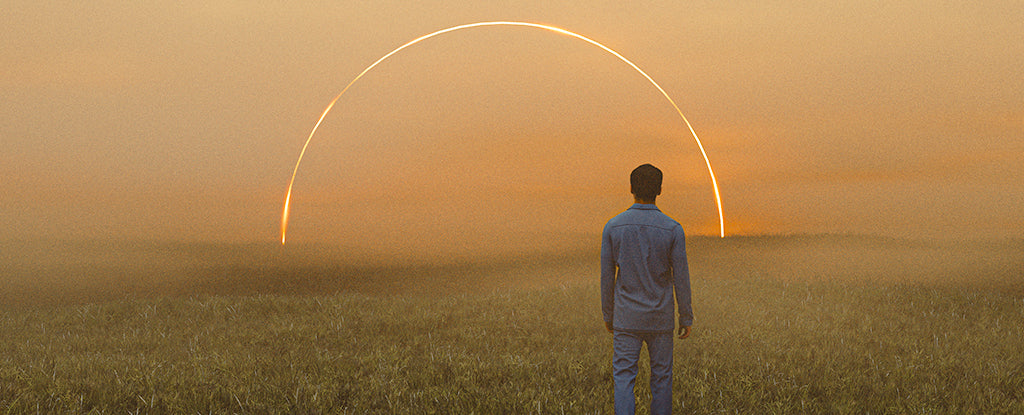
The Triduum: A Cosmic Drama in Three Acts
Every spring, the Catholic Church enters into one of its most ancient and profound observances: the Sacred Paschal Triduum — Holy Thursday, Good Friday, Holy Saturday, and the Easter Vigil. For many, it’s a familiar sequence of liturgies and rituals. But beneath the incense and candles lies a cosmic drama, one that feels almost science-fictional in its scope: a story of power inverted, dimensions bridged, and death defied.
If you’ve ever watched Dune, Interstellar, or Doctor Who, you know that the best sci-fi doesn’t just entertain — it reframes existence itself. The Triduum does the same thing. I love the Triduum and also sci-fi so let’s explore it from some unique angles, with a few sci-fi crossovers along the way.
Act I: Holy Thursday — A Kingdom of Servants
Most remember Holy Thursday for the Last Supper and the institution of the Eucharist. But hidden in plain sight is a moment of cosmic inversion: Jesus, Lord of the cosmos, kneels to wash the feet of his disciples. In ancient Middle Eastern culture, this wasn’t humility — it was unthinkable.
Sci-fi parallel: Think of Paul Atreides (Dune) assuming the mantle of messiah but refusing the glory, choosing instead to serve the Fremen as one of their own. Or Jean-Luc Picard relinquishing command to protect a crew member’s dignity.
Perspective: True power is found not in domination but in radical, self-giving service. It’s a Kingdom where authority is proven in kneeling, not in conquest.
Act II: Good Friday — The Silence of God
Good Friday isn’t merely about physical suffering. It’s about cosmic silence. The Word through whom the universe was made hangs on a cross and dies, crying out in abandonment: “My God, my God, why have you forsaken me?” For me as a child, the silence of Good Friday was always eerily palpable and the church in its starkness was unsettling.
Sci-fi parallel: This recalls Interstellar’s depiction of love transcending dimensions, even as Coop drifts alone through a black hole’s event horizon, isolated from time and space, yet still tethered to his daughter.
Perspective: In our darkest hours, when God feels absent, perhaps God is most profoundly present — not as a rescuer, but as a companion in the void.
Act III: Holy Saturday — The Day God Was Dead
Holy Saturday is the great theological breath-hold. No miracles. No appearances. Just a sealed tomb and the haunting quiet of divine absence. It's not just a pause in the story — it feels like the end. For the disciples, the Messiah they followed was gone. The movement was over. Hope was buried.
Sci-fi parallel: Think of Battlestar Galactica's moments between destruction and discovery, when all that's left is drifting in the void, unsure if Earth even exists. Or Blade Runner 2049, where K's slow, quiet unraveling leads him to a truth that neither rescues nor explains — just reorients. This is the part of the saga where the hero has fallen and the world holds its breath, wondering if anything will rise again.
Perspective: Holy Saturday affirms what most of life actually feels like — the in-between, the grief-soaked uncertainty, and the chapters where nothing makes sense yet. And yet, the Church insists: even in this silence, God is not absent. He is in the tomb with us.
Act IV: The Easter Vigil — Resurrection as Cosmic Reboot
The Easter Vigil begins in total darkness, broken only by the new fire of the Paschal Candle. It’s not mere symbolism — ancient Christians saw it as the cosmic light breaking through death’s hold. The Resurrection isn’t a one-off; it’s the prototype for a new reality.
Sci-fi parallel: Think of The Lion, the Witch and the Wardrobe (yes, fantasy but culturally huge) when Aslan returns after the Stone Table is broken, reversing the power of death itself. Or Star Wars: Return of the Jedi, when Luke’s refusal to give in to hatred tips the scales and turns darkness on its head. Or Harry Potter and the Deathly Hallows, when Harry willingly dies, only to awaken and shatter Voldemort’s hold on life and death.
Perspective: The Resurrection isn’t just about someday in heaven — it’s about how light keeps breaking through now, in hospital rooms, graveside vigils, fractured friendships, and lonely nights. It’s the promise that even when the night feels endless, dawn is inevitable.
The Triduum as One Liturgy — The Story You Can’t Separate
Here’s a liturgical geek fact that most Catholics don’t know: the Triduum is actually one continuous liturgy stretched over three days, with no dismissal until the Easter Vigil concludes.
Sci-fi parallel: It’s like Lord of the Rings — one story, three parts. You can’t pull them apart without losing the meaning. Suffering, death, waiting, and new life are part of a single, inseparable reality.
Final Thought
The Triduum isn’t just ancient ritual. It’s a timeless, universe-spanning drama where the laws of power, time, death, and life are rewritten. In an age obsessed with dystopias and AI apocalypses, this sacred three-act play reminds us of an older, wilder story: that love conquers death, and light wins in the end.
And isn’t that the kind of epic we’ve always longed for?
